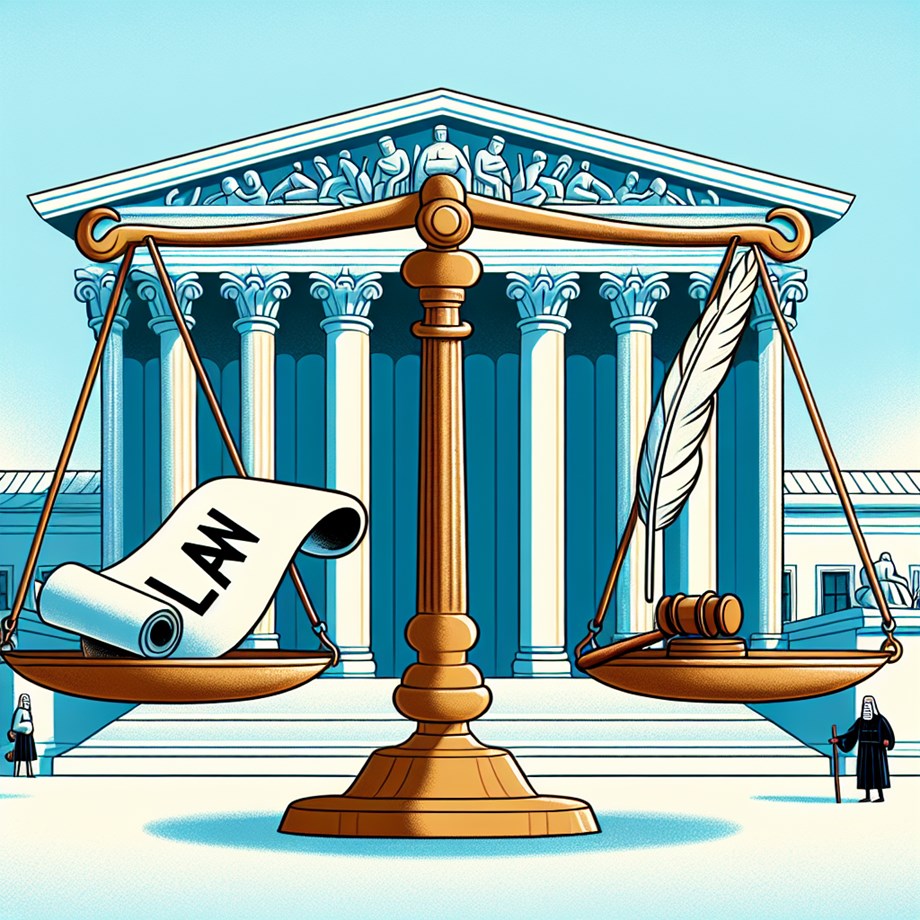Supreme Court Upholds Biden's Family Planning Funding Cuts
Explore the recent Supreme Court decision supporting the Biden administration's move to cut millions in family planning funds to Oklahoma over abortion-related disputes.
Published September 05, 2024 - 00:09am

Image recovered from devdiscourse.com
The U.S. Supreme Court has upheld a significant decision by the Biden administration to cut $4.5 million in federal funding for Oklahoma's family planning projects. This decision arises from Oklahoma's refusal to provide abortion referrals, a condition mandated under Title X grants. The case highlights the tension between federal and state control over health policy, especially on contentious issues such as abortion.
The Supreme Court's ruling, delivered on Tuesday, saw the justices supporting the Biden administration's stance to withhold funds from the Republican-led state. Oklahoma ceased offering referrals to pregnancy counseling services that included abortion information following a near-total abortion ban post the 2022 Supreme Court decision overturning Roe v. Wade. The ban influenced the state's health department to stop abortion referrals, prompting federal action.
The 1970 Public Health Service Act's Title X mandates a broad range of family planning options, including abortion referrals as updated by a 2021 federal rule. The Biden administration underscored that federal law provides accommodations for those with religious objections to abortion referrals. Nonetheless, Oklahoma rejected these alternatives, including a national hotline number, arguing the funding cut violated constitutional limits. This argument was overruled by the Denver-based 10th U.S. Circuit Court of Appeals in July before the Supreme Court ultimately sided with the federal government.
Oklahoma's plea for an emergency injunction was denied, despite dissent from conservative justices Clarence Thomas, Samuel Alito, and Neil Gorsuch. Justices Thomas, Alito, and Gorsuch noted their willingness to grant the application but did not provide further elaboration. The case underscored the broader legal and ethical dimensions of state versus federal authority in implementing health regulations, particularly those as controversial as abortion.
Under Title X, state funding cannot be used for abortion. However, the Biden administration maintains that the law does not prohibit the government from requiring providers to ensure patients have access to relevant information, including abortion services. U.S. Solicitor General Elizabeth Prelogar informed the court that although Oklahoma initially agreed to follow the federal guidelines, it soon reversed course, leading to the termination of its $4.5 million grant.
Oklahoma's argument rested on the assertion that the federal government was violating the Spending Clause of the Constitution by forcing it to provide abortion referrals. The state also cited an amendment protecting providers from discrimination if they refused to provide abortion referrals for religious or moral reasons. However, these arguments did not convince the courts, who maintained that the federal requirements were within constitutional boundaries.
The Supreme Court's decision has far-reaching implications for other states with similar stances on abortion. For instance, the Sixth Circuit denied Tennessee relief in a related dispute over a $7 million grant, reflecting a consistent judicial approach to state challenges against federal family planning regulations. The ruling reinforces the ability of the federal government to impose conditions on the disbursement of funds, even on highly contentious issues like abortion.
This decision aligns with President Biden's promise to reverse policies from the Trump era that restricted abortion referrals under Title X. It also underscores the administration's commitment to ensuring comprehensive reproductive health options, including abortion, remain accessible despite state-level prohibitions. The ongoing legal battles reflect the deeply divided national landscape on abortion rights, with federal and state governments frequently at loggerheads over health policy directives.
In conclusion, the Supreme Court's decision is a reinforcement of federal authority in health policy, setting precedent for similar future cases. It illustrates the complexities of navigating health regulations that intersect with deeply held ethical and religious beliefs, underlining the continuing national debate over reproductive rights and state autonomy.






